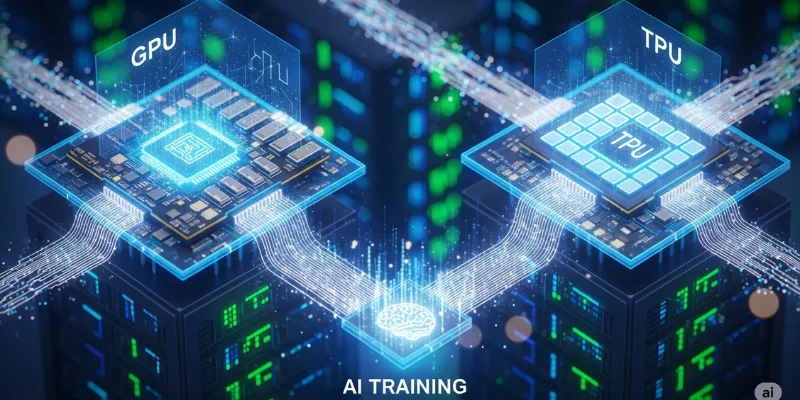Artificial Intelligence has expanded quickly, powering everything from recommendation engines and chatbots to driverless cars and sophisticated medical diagnostics. For anyone curious about understanding AI and its core technologies, signing up for an Artificial Intelligence Course in Hyderabad at FITA Academy can offer a solid basis. A major driving force behind the progress of AI is the hardware that supports model training. The enormous computational demands of contemporary AI systems are mostly handled by GPUs (Graphics Processing Units) and TPUs (Tensor Processing Units).
Why AI Training Requires Specialized Hardware
AI models, especially deep learning models, learn from large datasets by adjusting millions or even billions of parameters. This process, known as training, involves performing a large number of mathematical operations like matrix multiplications and vector transformations. Due to their highly parallel nature, these jobs can be divided into smaller components and completed concurrently.
Traditional CPUs (Central Processing Units), which are designed for general-purpose computing, are not efficient at handling such large-scale parallel computations. Gain hands-on expertise in AI hardware by enrolling in an Artificial Intelligence Course in Pune, where you’ll explore how GPUs and TPUs outperform traditional CPUs in real-world applications. These specialized processors offer the performance needed to train AI models faster and more efficiently.
What Are GPUs and Why Are They Used in AI?
Graphics processing units (GPUs) were initially created to handle the rendering of graphics in video games and various visual applications. Over time, researchers realized that the same architecture that made GPUs good at handling pixels and images could also accelerate the types of calculations used in AI.
The key advantage of GPUs lies in their ability to perform thousands of operations at the same time. In contrast to CPUs, which usually contain a limited number of cores geared towards sequential operations, Graphics processing units (GPUs) are made up of numerous smaller cores designed specifically for parallel processing, often numbering in the hundreds or thousands. This makes them ideal for tasks such as training convolutional neural networks (CNNs) and other deep learning models.
Today, GPUs are widely used in AI research and development. Enhance your practical skills by joining an Artificial Intelligence Course in Delhi, where you’ll work directly with GPUs using popular frameworks like TensorFlow and PyTorch, which are widely used by developers and researchers worldwide.
Introducing TPUs: AI-Specific Accelerators
While GPUs are powerful, they were not originally built with AI in mind. This led to the development of TPUs, or Tensor Processing Units. TPUs are custom-built hardware developed specifically for machine learning workloads.
Designed by Google, TPUs are optimized for handling tensor operations, which are at the core of most deep learning models. They are particularly effective in executing large-scale matrix multiplications, a common operation in neural network training. By focusing on these specific tasks, TPUs can deliver significant speed improvements and energy efficiency over general-purpose GPUs in many AI applications.
TPUs are often used in large-scale cloud environments, especially when training models that require immense computational resources. Build a strong foundation in scalable AI systems by joining AI Courses in Lucknow, where you’ll learn how TPUs integrate with platforms like Google Cloud AI and support leading machine learning frameworks for efficient model training and deployment.
Comparing GPUs and TPUs in AI Training
When deciding between GPUs and TPUs, it’s important to understand the strengths of each. GPUs are more flexible and widely supported across various software and hardware environments. They are an excellent choice for researchers, students, and developers building a wide range of AI applications.
TPUs, on the other hand, are more specialized. They offer better performance per watt and can reduce training time for very large models. However, they are typically accessed through cloud services and may require adjustments in model design or framework compatibility.
The Future of AI Hardware
As AI models evolve and become increasingly complex, the demand for high-performance hardware will only increase. Both graphics processing units (GPUs) and tensor processing units (TPUs) will be crucial in influencing the future of artificial intelligence. Researchers are also exploring new types of processors, such as neuromorphic chips and quantum accelerators, to expand the limits of what AI is capable of accomplishing.
Understanding the role of GPUs and TPUs in AI training helps highlight how hardware choices directly impact model performance, development speed, and scalability. An Artificial Intelligence Course in Chandigarh can help you gain knowledge and expertise. Whether you are building a small prototype or training a massive AI model, choosing the right hardware is a critical step in the AI development process.
Also check: What Are Training Data, Algorithms, and Models?
